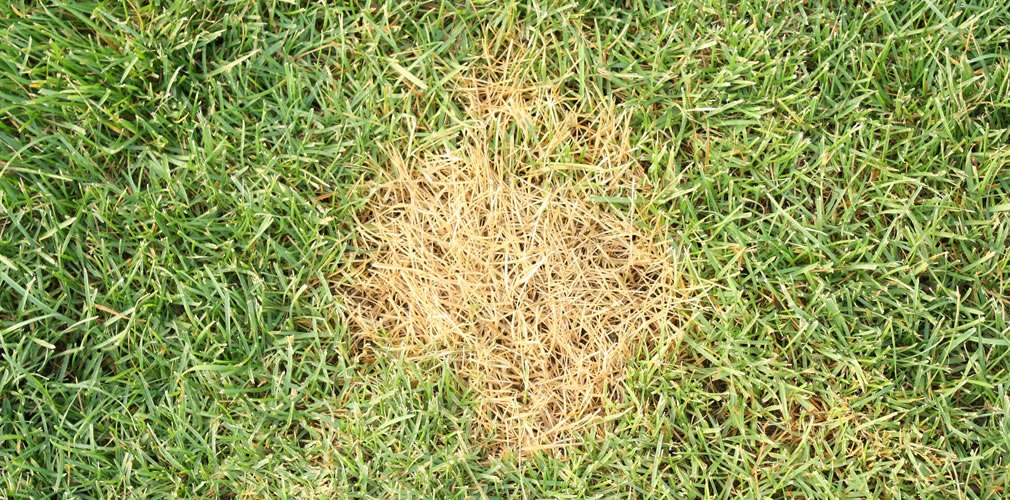Repairing Brown Spots and Dead Grass
Brown patches are the most common complaint among our clients. Many different issues can cause these spots and it can be difficult to diagnose the culprit. There are a number of things you can do to help repair your lawn, even if you are not exactly sure what the problem is.
De-thatching Your Lawn
Excess thatch build-up can wreak havoc on your lawn. Thatch is a layer of dead grass and living roots that develops between the healthy grass layer and the soil. This brown, straw-like mixture causes the grass to thin out and makes it more susceptible to disease and weeds. Thatch holds onto water like a sponge and perpetuates the growth of lawn fungi.
De-thatching can be a time-consuming process, but it is a necessary one. A standard rake can be used to de-thatch a lawn that is not inundated with thatch. A de-thatching rake may be necessary for a lawn that has very thick thatch. Rake the entire lawn, gathering any debris that lifts up. Be sure to remove all thatch that you dislodge from the grass.
Spot Fixes
If the dead spot of lawn is limited to one area, your best option is to re-seed. Prepare the soil by removing the dead grass and any roots and rocks. Use a hand rake to turn the soil over. Add in some new compost and mix well with the existing soil. Smooth the soil with a rake and then pat firmly with your hands.
Scatter grass seed evenly over the area and rake to cover with a thin layer of soil. Be sure to use the grass seed that matches your current grass. Water the repaired area consistently for the first few weeks. It is important to keep the spot moist while the seed is taking root.
Proper Fertilization
All lawns need fertilization to look their best. The first application of fertilizer should take place in the spring. There are many different fertilizers available. Choose one that is best suited to the type of grass that you have, the time of year you are applying it and the climate you live in.
It is important to water your lawn a few days before you apply fertilizer. However, you want to make sure that your lawn is completely dry before you put down the fertilizer to avoid burns. A rotary spreader is the easiest way to get an even distribution of fertilizer on your lawn. After applying the fertilizer, thoroughly water your lawn. Water rinses the fertilizer off of the blades of grass so they don’t burn, and it helps the fertilizer sink into the soil. Keep children and pets off of newly fertilized lawn for 24-48 hours.
Keeping your lawn looking lush and healthy takes work, but it is definitely do-able. With the proper maintenance and intermittent touch-ups your lawn can be the envy of every one of your neighbors.

